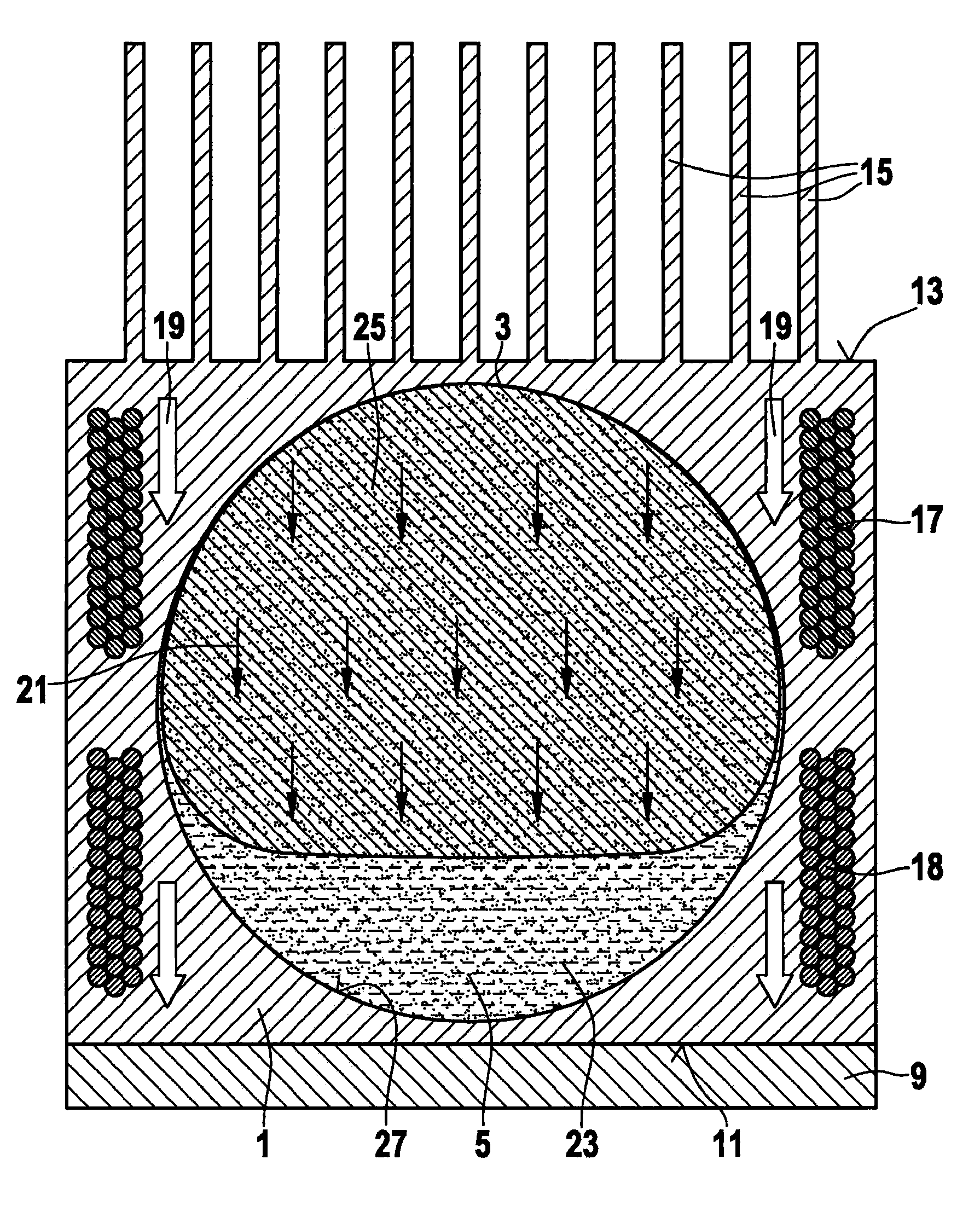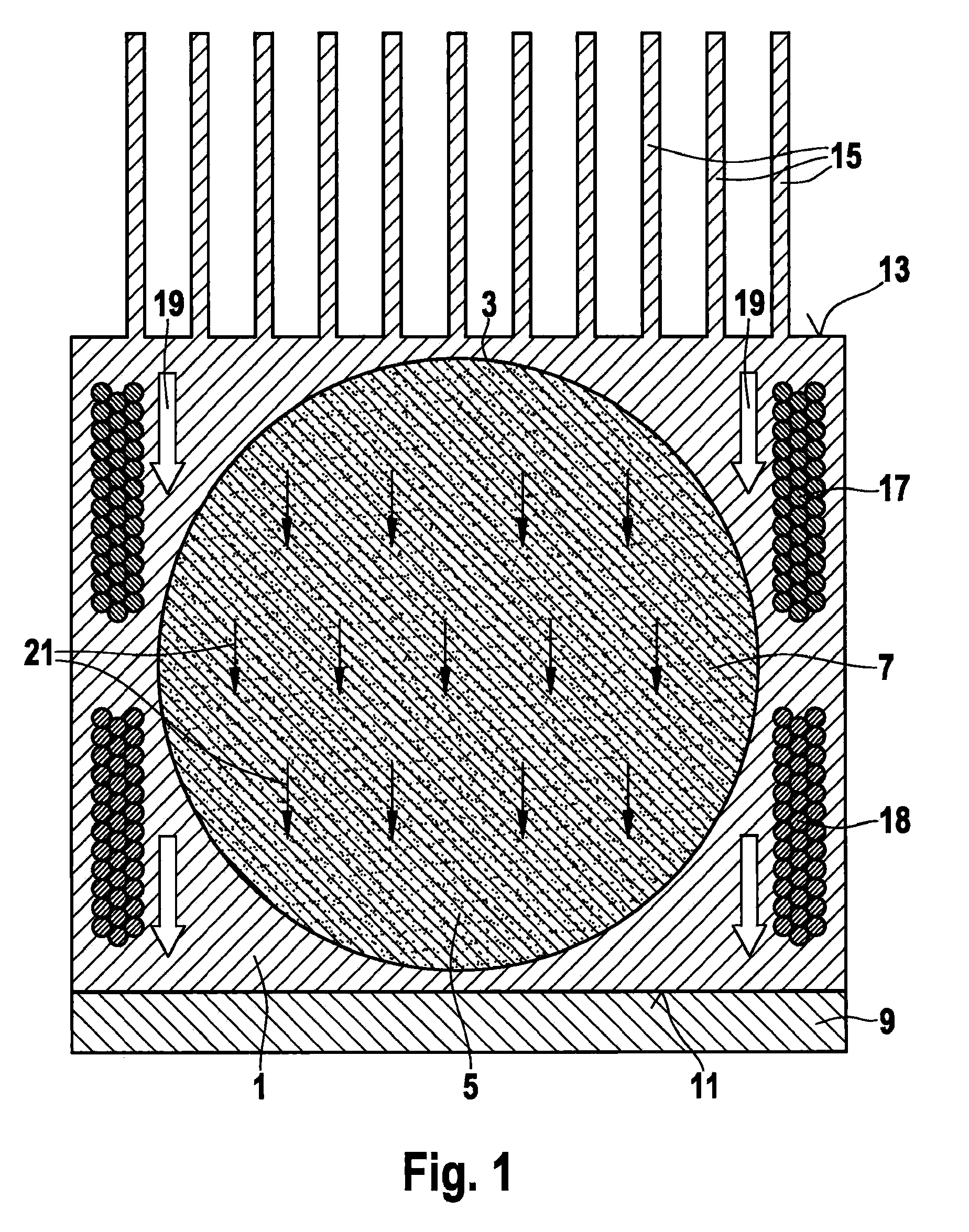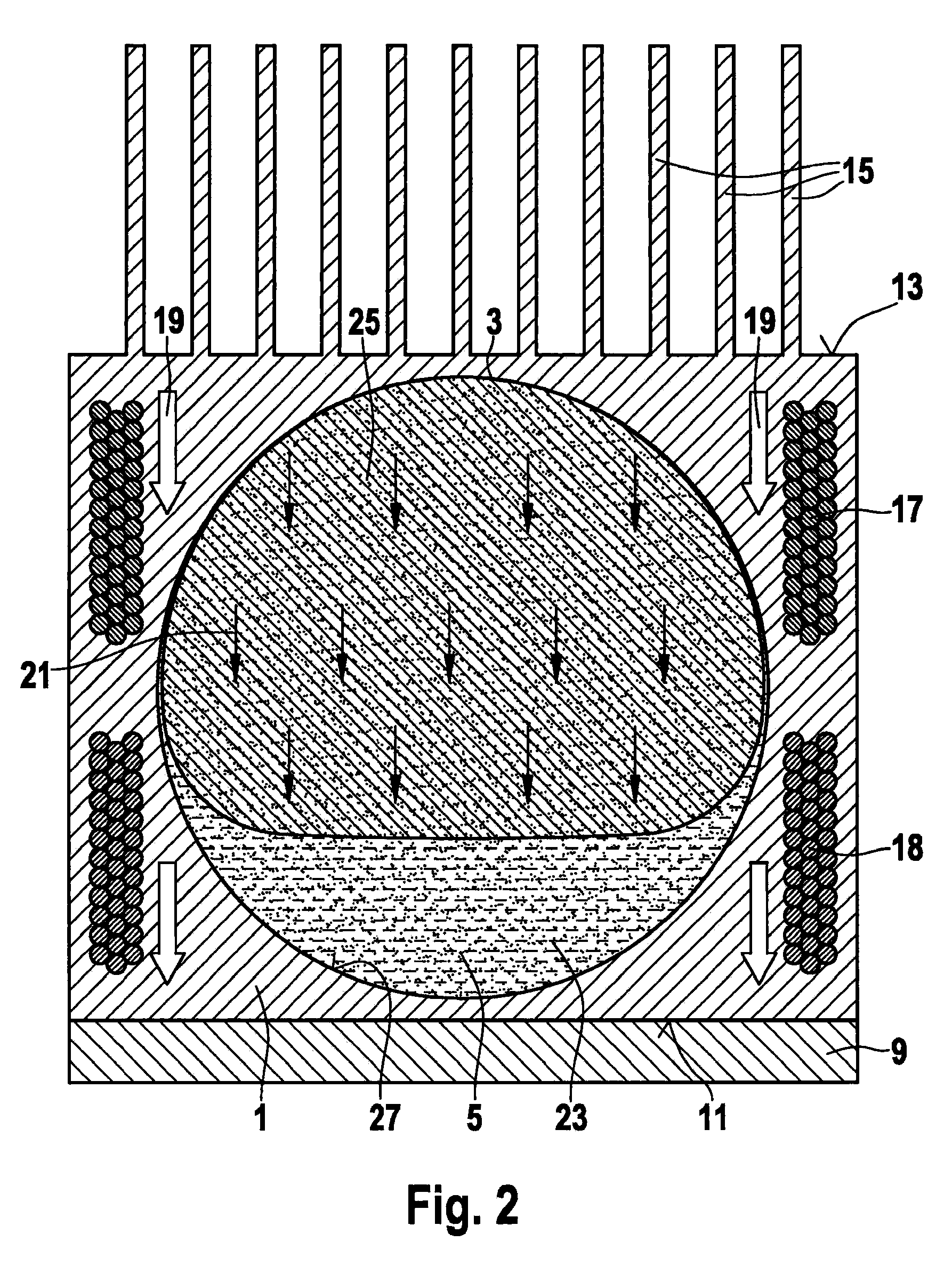Device and method for cooling components using magnetizable phase-change material
a phase-change material and device technology, applied in the direction of indirect heat exchangers, semiconductor/solid-state device details, lighting and heating apparatus, etc., can solve the problems of high-integrated electronic circuits that may heat up very quickly, premature ageing and breakdown of the entire sub-assembly, and relatively high elements cost. , to achieve the effect of increasing latent-heat storage capacity, high heat flow, and simple and precise manner
- Summary
- Abstract
- Description
- Claims
- Application Information
AI Technical Summary
Benefits of technology
Problems solved by technology
Method used
Image
Examples
Embodiment Construction
[0036]In FIGS. 1 through 6, a method for cooling components in a device for cooling components is shown in a first specific embodiment.
[0037]An example device designed for cooling components according to the present invention includes a housing 1, which made of a material having excellent thermal conductivity. Metal materials are particularly suitable for housing 1. Especially suitable is copper or aluminum, for example. A cavity 3 is formed in the housing. In the specific development illustrated here, cavity 3 has a circular cross-section. Cavity 3 developed with a circular cross-section may be in the shape of a cylinder, a ball, or also have a conical form or the form of a truncated cone. Preferably, however, cavity 3 is spherical or cylindrical. Contained in cavity 3 is a phase-change material 5. Employed phase-change material 5 is a function of the temperature of the component to be cooled. For example, paraffin, waxes, grease, fatty acids, metal alloys such as bismuth-lead allo...
PUM
| Property | Measurement | Unit |
|---|---|---|
| particle diameter | aaaaa | aaaaa |
| magnetic field | aaaaa | aaaaa |
| magnetization | aaaaa | aaaaa |
Abstract
Description
Claims
Application Information
 Login to View More
Login to View More - R&D
- Intellectual Property
- Life Sciences
- Materials
- Tech Scout
- Unparalleled Data Quality
- Higher Quality Content
- 60% Fewer Hallucinations
Browse by: Latest US Patents, China's latest patents, Technical Efficacy Thesaurus, Application Domain, Technology Topic, Popular Technical Reports.
© 2025 PatSnap. All rights reserved.Legal|Privacy policy|Modern Slavery Act Transparency Statement|Sitemap|About US| Contact US: help@patsnap.com



